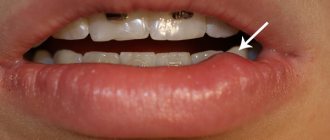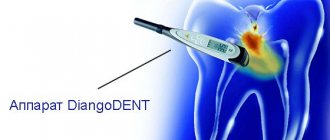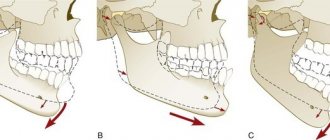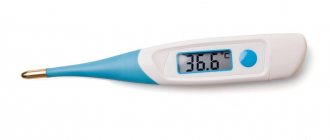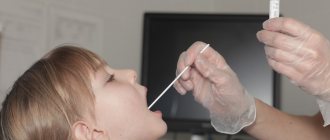Sore throats or tonsillitis include infectious diseases characterized by inflammatory processes in the palatine tonsils. There are many such pathologies. They are usually classified according to the type of pathogen and clinical course. The most dangerous types of tonsillitis include necrotizing tonsillitis of Simanovsky-Vincent.
Nowadays it can rarely be found in patients. The main difference between ulcerative membranous tonsillitis and other forms of tonsillitis is necrosis of the tonsils and surrounding tissues. The process develops rapidly, so complications are frequent.
Causes and risk factors
If a person has a weakened immune system for some reason, the risk of necrotizing tonsillitis becomes higher. A major role in the development of the pathological process is played by the low local resistance of the flora to pathogenic agents. Protective substances in the nasopharynx cannot fight pathogenic bacteria or there are very few of them.
When the pathogen enters the nasopharynx, it quickly ends up in tissues with primary localization in the area of the palatine tonsils. Bacteria begin to produce toxins that destroy lymphoid tissue. Erosion and ulcers occur.
Also, the risk of necrotizing tonsillitis arises:
- with poor nutrition and malnutrition;
- with a pronounced lack of vitamins and minerals;
- for chronic intestinal infections and other protracted illnesses.
The risk of developing ulcerative membranous tonsillitis is high in patients suffering from leukemia and cancer. Poor oral hygiene can also lead to illness. Smoking for many years, infection with helminthic infestations, long-term treatment with antibacterial drugs and working with hazardous chemicals also contribute to the development of this disease. Stress and overwork aggravate the situation, as does any hypothermia. Among the foci of chronic infections, particularly noteworthy are progressive dental caries and other dental pathologies.
Folk remedies
Traditional medicine offers a large number of recipes for treating such a complex disease as sore throat at home. In case of acute tonsillitis, it is necessary to wash away microbes from the mucous membrane of the pharynx, and for this purpose it is recommended to use infusions and decoctions of herbs.
The following procedures give a good effect:
- Frequently rinsing the mouth with a solution of sea water helps get rid of pain in the throat.
- You can get rid of the unpleasant symptoms of the disease in a few days with the help of garlic, using it for compresses, inhalations and rinses.
- Drinking oregano decoction throughout the day will help get rid of hoarseness.
- at the very beginning of the development of tonsillitis, it is recommended to chew lemon zest along with the pulp and gargle with a solution of lemon juice.
- If a sore throat is accompanied by an increase in body temperature and chills, then warm tea with the addition of lingonberries, lemon or raspberries helps to alleviate the condition.
When diagnosing acute tonsillitis, it is important to drink as much fluid as possible, which will help remove all accumulated toxins from the body and restore water balance.
Signs and symptoms
There are three forms of ulcerative membranous tonsillitis:
- Easy. The temperature is normal or subfebrile, the oral cavity is hyperemic, and there is plaque on the tonsils. The lymph nodes are not enlarged, and it is painful for the patient to swallow.
- Average. The temperature rises to 38, the throat hurts constantly, including when eating. The tonsils are inflamed and swollen, their surface is covered with dark spots, sometimes with a whitish tint. The spots are round, up to 1.5 cm in diameter, and can merge. When trying to remove the plaque, blood is found under the film.
- Heavy. Critical temperature readings reach 40, the tonsils are swollen, depigmented, swelling and inflammation involve the surrounding tissues.
Necrotizing tonsillitis can be a separate disease, but sometimes it is associated with ulcerative stomatitis, the causative agent of which is the same. An important diagnostic point: as a rule, only one of the tonsils becomes inflamed. A process localized on both sides is a rare occurrence.
The first symptoms of any sore throat include a feeling of discomfort and pain during swallowing. An objective examination shows that one tonsil is affected and a gray coating is visible on it. It is often compared to a candle drop. The flight includes:
- dead due to tissue necrosis;
- leukocytes;
- pathogenic microflora that caused the infection.
Ulcers with jagged edges become larger, and the patient’s mouth smells unpleasantly of rot. Fever can be expressed in different ways, depending on the stage of the process. In severe cases, enlargement and pain of regional lymph nodes are observed.
Free consultation on training issues
Our consultants are always ready to tell you about all the details!
In the absence of treatment and the disease is neglected, the infection spreads from the tonsils to the entire soft palate. When coccal microflora is added, the patient’s general condition deteriorates in the form of high fever and severe sore throat.
If necrotizing tonsillitis is treated correctly, therapy will take approximately 14 days.
Types of purulent sore throat
In otorhinolaryngology, several forms of the disease are distinguished: catarrhal, follicular, lacunar, and phlegmous, ulcerative-necrotic, dental and latent (Simanovsky-Plaut-Vincent). Immediately after diagnosis, qualified treatment of the disease should be started on the same day in adults and children, regardless of the form of the disease. In this article we will describe the most basic forms of sore throat.
With follicular tonsillitis, the tonsils become greatly enlarged, and purulent spots appear on their surface. The disease begins rapidly with a sharp rise in temperature to 40°C. The lymph nodes become enlarged, and when pressed on them the patient experiences discomfort. The patient is overcome by headaches, “aches” throughout the body and general malaise.
With lacunar angina, purulent masses penetrate into the thickness of the entire tonsil, filling its lacunae. To the symptoms of follicular tonsillitis, a reaction from the gastrointestinal tract is added: vomiting, diarrhea, nausea. A characteristic yellowish coating is noticeable on the tonsils, upon removal of which the patient feels improvement and the body temperature drops.
Phlegmonous is the most severe form of the disease. It is characterized by the accumulation of purulent masses in the tonsil, the patient’s temperature reaches 40°C. In parallel, swelling of the neck and perimaxillary area occurs. Possible respiratory arrest. The patient experiences severe pain: it becomes impossible to speak or swallow. The patient must be immediately sent to hospital, since in the absence of prompt assistance there is a risk of death.
Such a division, of course, is quite arbitrary, since one type of disease can transform into another and cause serious health problems (provided that qualified treatment of the disease is not provided to adults).
Diagnostics
Since there are so many tonsillitis, doctors need to learn to distinguish between them:
- with ordinary sore throat, the sore throat is severe, with general weakness and fever. Both tonsils are affected, they are hyperemic, enlarged, there is plaque, but it is lighter;
- with diphtheria, the symptoms resemble ordinary tonsillitis with bilateral damage to the tonsils, but the diphtheria film on them cannot be confused with anything. It is tightly attached to the surrounding tissues, gray in color and almost impossible to remove. The decisive moment of diagnosis is taking a swab from the throat;
- tonsillitis during leukemia. Pain and intoxication, tonsils can be necrotic, as with Simanovsky-Vincent angina. A general blood test showing exclusively leukotic manifestations is of decisive importance. This is a high concentration of leukocytes (several tens of times higher than in a normal inflammatory process) with blast forms of immature cells.
It is clear that laboratory tests help in making an accurate diagnosis, since based on external symptoms it is not always possible to completely verify the clinical picture of the disease. It is possible to finally give the patient the correct diagnosis with the help of:
- clinical blood test. Leukocyte background and formulas, erythrocyte sedimentation rate are assessed;
- general urine analysis. Determine whether the kidneys are affected, whether there is protein and red blood cells in the urine;
- blood biochemistry with determination of total and C-reactive protein, creatinine, bilirubin, urea, etc.;
- a swab taken from the throat. We are talking about both the detection of a specific pathogen and the determination of the sensitivity of pathogenic flora to antibacterial drugs;
- PCR method. It well identifies the causative agent of a sore throat of a viral nature. Mainly, the PCR method is useful in searching for and detecting the Epstein-Barr virus.
In addition, the patient is prescribed an ECG and ultrasound to understand whether there are pathological changes in the heart. Sometimes it is necessary to consult with more specialized specialists - an ophthalmologist, a neurologist or a cardiologist.
Methods for washing tonsils: which one to choose?
Washing the tonsils is, of course, not a surgical operation, but it should be performed by an otolaryngologist. In no case should you try to do this yourself or with the help of relatives, since if done incorrectly, you can not only not eliminate the symptoms of chronic tonsillitis, but also “drive” the disease deeper - then it will be difficult for the doctor to cope with the consequences. In addition, you can unknowingly injure the palate and the tonsils themselves.
The two most common methods of washing the lacunae of the palatine tonsils today are with a syringe and a device that combines the effects of ultrasound and vacuum. Which method is preferable?
Flushing with a syringe. In a regular district clinic, the patient will most likely be offered to rinse the tonsils with a syringe. A cannula is attached to it (a special brass rod with a replaceable tip). The patient is required to sit for a while with his mouth open to gain access to the infected tonsils.
Before starting the procedure, the surface of the larynx is treated with an anesthetic (lidocaine) - this will reduce the discomfort. In general, the procedure is considered painless and lasts about 10 minutes. During its implementation, liquid is pumped out from the cavities of the tonsils, purulent plugs, small pieces of stuck food, pathogenic microbes and the remains of their vital activity are cleansed. At the same time, the surface of the pharynx and lacunae are irrigated with special solutions that help stop inflammatory processes.
Washing the tonsils using the vacuum method. Recently, the second method of washing the tonsils has been increasingly used - with a vacuum apparatus called “Tonsilor”. It works like a kind of micro-vacuum cleaner, sucking out the pathogenic contents of the lacunae, freeing and cleaning them. Rinsing the tonsils with Tonsilor uses ultrasound, which effectively extinguishes inflammation, has analgesic properties, and helps the fluid actively penetrate into the tissue.
Standard Treatments
Since the inflammatory process develops in an open form and is local in nature, rinsing for necrotic sore throat is necessary. One of the best options is to treat the tonsils with hydrogen peroxide (3 percent solution). Potassium permanganate, furacillin and potassium chloride also help well. You need to gargle as often as possible, at least 6 times a day.
Doctors prescribe antibacterial drugs for the progressive course of necrotizing tonsillitis. Groups of antibiotics can be as follows:
- penicillin;
- cephalosporin;
- macrolides.
The first group consists of all penicillin drugs (including amoxicillin), from the second group cefazolin is often prescribed. The third group is represented by erythro- and clarithromycin. It is she who is the safest of all the others. Side effects when using macrolides are minimal, so they can be prescribed in childhood.
The patient should also stay in bed and eat well. Antipyretics are used as symptomatic treatment.
If the sore throat is very severe or recurs, the issue of surgical removal of the tonsils should be raised.
How to treat a sore throat?
Below are a number of universal recommendations that must be followed when treating sore throat at home:
- Bed rest. Having a sore throat on your legs often leads to the development of complications.
- Drink plenty of fluids. It is necessary to relieve intoxication and remove pathogens and their waste products from the body. You can drink water, tea, compotes, fruit drinks, juices. The main thing is that they are warm.
- Antiseptics. All kinds of lozenges, lozenges and aerosols for sore throat are used in cases of severe pain as symptomatic therapy.
- Antipyretics. They are taken if the temperature has risen above 38 degrees and it becomes difficult for the patient to tolerate it.
- Gargling for sore throat. Helps get rid of white plaque, which is a source of inflammation. It is recommended to gargle every hour if you have a sore throat.
In most cases, sore throat is caused by streptococci, so the main medications for sore throat are penicillin antibiotics. The most effective of them is benzylpenicillin. If the patient is allergic to penicillins, then macrolides (Azithromycin, Erythromycin) may be prescribed. Tetracyclines and sulfonamides are ineffective for angina.
Treatment of lacunar tonsillitis
Drug therapy is prescribed only after examination by an otolaryngologist, laryngoscopy, and blood and smear tests. The examination will show the nature of the plaque - lacunar tonsillitis is characterized by a fluffy filmy coating.
Basically, the treatment regimen does not differ from ordinary tonsillitis. It includes:
- Taking medications. This necessarily includes antibiotics of the penicillin group and macrolides. They are the ones who fight the main cause of the disease – streptococcus. Antipyretics, antihistamines to relieve swelling of the tonsils, and eubiotics to restore intestinal flora after taking antibiotics are also prescribed.
- Gargling.
- Irrigation of tonsils with antiseptics.
- Vitamin therapy.
- Inhalations. Cleansing the upper respiratory tract with steam reduces swelling, inflammation and bacterial growth. Inhalation of alkaline water, saline, antiseptic, and homeopathic medicines has a beneficial effect. It is convenient to use a nebulizer as a nebulizer.
The duration of treatment is at least 7 days and no more than 14 days.
After the inflammation has decreased and pus has ceased to be produced, physiotherapy is prescribed. Infrared irradiation, magnetic therapy, and phonophoresis are effective. These procedures increase local immunity, accelerate tissue regeneration, and shorten the recovery period.
In case of inflammation of lacunae, nutrition is an important factor. Since swallowing is difficult, you need to eat liquid food. You should exclude all foods that scratch and irritate a sore throat. It is recommended to drink up to three liters of fluid per day to reduce signs of intoxication.
Acute tonsillitis (common name - sore throat)
an infectious disease with local manifestations in the form of acute inflammation of the components of the lymphatic pharyngeal ring, most often the palatine tonsils, caused by streptococci or staphylococci, less often by other microorganisms, viruses and fungi. Sore throat is also called exacerbation of chronic tonsillitis.
The most common are vulgar (ordinary, banal) tonsillitis: catarrhal, lacunar, follicular, fibrinous, phlegmonous, herpetic and ulcerative membranous. In recent years, all types of tonsillitis have been called acute tonsillitis.
Catarrhal
Catarrhal tonsillitis develops acutely, the patient complains of a burning sensation in the throat, dryness, soreness, and then there is slight pain when swallowing. A clinical picture of astheno-vegetative syndrome is observed. The temperature is usually low-grade. Upon examination, the tonsils are hyperemic, somewhat enlarged in size, and in some places may be covered with a thin film of mucopurulent exudate. The tongue is dry and coated. There is a slight increase in regional lymph nodes. Typically, clinical manifestations disappear within 3-5 days.
Follicular
Follicular tonsillitis begins with an increase in body temperature to 38-39 °C. And the occurrence of severe pain in the throat when swallowing, often radiating to the ear. Depending on the severity of intoxication, headache, lower back pain, fever, chills, and general weakness occur. Most often, the submandibular lymph nodes are enlarged and their palpation is painful. There is hyperemia of the soft palate and tonsils, on the surface of which numerous round, somewhat raised yellowish or yellowish-white dots are visible. The duration of the disease is 5-7 days.
Lacunarnaya
Lacunar tonsillitis occurs with symptoms similar to follicular tonsillitis, but more severe. With it, yellowish-white plaques appear against the background of the hyperemic surface of the enlarged tonsils. The duration of the disease is 5-7 days.
Fibrinous
Fibrinous tonsillitis is characterized by the formation of a single continuous plaque of a whitish-yellow color, which can extend beyond the tonsils. This type of sore throat can develop from lacunar or proceed independently with the presence of a continuous film already in the first hours of the disease. In the latter case, an acute onset is characteristic with high fever, chills, severe symptoms of general intoxication, sometimes with signs of brain damage.
Phlegmonous (intratonsillar abscess)
Phlegmonous tonsillitis is relatively rare. Its development is associated with purulent melting of the tonsil area. The defeat is usually unilateral. The tonsil is enlarged, hyperemic, its surface is tense, and painful on palpation. On examination, a forced position of the head and enlarged regional lymph nodes, painful on palpation, are characteristic. Complaints of sore throat when swallowing, talking; headache, increased body temperature to 39-40 °C, symptoms of general intoxication. Pharyngoscopy: the tonsil is enlarged, hyperemic, its surface is tense, and painful on palpation. Characterized by trismus of the masticatory muscles, asymmetrical pharynx due to displacement of the uvula and tonsil to the healthy side. The mobility of the soft palate is limited.
Herpetic
Herpetic sore throat often develops in childhood. Its causative agent is the Coxsackie A virus. The disease is highly contagious and is transmitted by airborne droplets and rarely by the fecal-oral route. Herpetic sore throat debuts acutely, fever appears, the temperature rises to 38-40 ° C, sore throat occurs when swallowing, headache, muscle pain in the abdomen; There may be vomiting and diarrhea. Small reddish bubbles are visible in the area of the soft palate, uvula, palatine arches, tonsils and posterior wall of the pharynx. After 3-4 days, the blisters burst or resolve, and the mucous membrane takes on a normal appearance.
Ulcerative-membranous
The causative agent of ulcerative membranous sore throat is considered to be a symbiosis of a spindle-shaped bacillus and an oral spirochete, which often live in the oral cavity of healthy people. Morphological changes are characterized by necrosis of the surface of one tonsil with the formation of an ulcer. The patient complains of a feeling of awkwardness and a foreign body when swallowing, putrid odor from the mouth, and increased salivation. Body temperature, as a rule, is not elevated. There is moderate leukocytosis in the blood. Regional lymph nodes are enlarged on the affected side. The duration of the disease is from 1 to 3 weeks, sometimes lasting several months.
In more than 50%[1] cases of angina, the main etiological role belongs to group A β-hemolytic streptococcus, adenoviruses, herpes virus, Coxsackie Enterovirus, Vincent's spirochete, and Candida fungi.
Predisposing factors: local and general hypothermia of the body, decreased local and general immunity, trauma to the tonsils, the state of the central and autonomic nervous system, impaired nasal breathing, chronic inflammatory processes in the oral cavity, nose and paranasal sinuses[1].
Clinical manifestations
In acute primary tonsillitis, the clinical picture is manifested by symptoms of damage to the tonsils - varying degrees of pain in the throat when swallowing, signs of general intoxication, hyperemia, swelling of the tonsils, fibrinous-purulent plaque at the mouths of the lacunae, grayish-yellow plaque, under which superficial low-painful ulcers are found, regional lymphadenitis.
A sore throat begins with a sore throat and a sharp increase in body temperature to 39–40 °C (sometimes up to 41 °C). Sore throat is usually severe and sharp, but can also be mild. Lymph nodes enlarge. They can be easily felt under the lower jaw and cause pain. Sore throat can also occur at lower body temperatures - from 37 to 38 ° C, but with greater damage to the throat.
Sore throat often occurs with ARVI, especially of adenoviral origin, but enlarged lymph nodes are relatively rare.
Diagnostics
The main diagnostic technique for recognition is examination of the pharynx - pharyngoscopy, as well as assessment of complaints and medical history. Also, to determine the type of infection, a smear of mucus or pus is taken from the tonsils. The biomaterial is sent for various types of tests according to the decision of the attending physician.
Complications
The most common complications of tonsillitis are acute otitis media, acute laryngitis, laryngeal edema, neck phlegmon, peripharyngeal abscess, and acute cervical lymphadenitis.
Treatment
Basic recommendations: bed rest in the first days of the disease, a non-irritating, soft and nutritious diet, vitamins, and drinking plenty of fluids.
In the treatment of sore throat, the choice of drug depends on the type of microbe that caused the disease. The type of drug, dosage and method of administration are determined by the attending physician.
- In the treatment of bacterial sore throats, various types of antibiotics and antimicrobial drugs of synthetic origin are used (depending on the sensitivity of the microbe and the patient’s response to medications), various local antiseptics, which are available in the form of a spray or aerosol, as well as tablets, lozenges and lozenges.
- In the treatment of fungal tonsillitis (this disease is provoked mainly by a fungus from the genus Candida), antifungal drugs are used. Fungal tonsillitis often occurs after long-term treatment with antibiotics.
- Treatment of viral tonsillitis involves the use of anti-inflammatory drugs, as well as symptomatic drugs.
Often, for sore throat of any origin, the otolaryngologist prescribes various antiseptic and cleansing solutions for gargling, which are prescribed for use hourly. Recently, experts believe that gargling does not speed up the healing process, but may make you feel better.
At temperatures above 38 degrees, you can take antipyretics. For bacterial etiology of sore throats, in many cases an antibiotic is prescribed that is active against coccal flora (streptococci and staphylococci), the course is carried out for at least 7 days,
Prevention
To prevent tonsillitis, timely sanitation of foci of chronic infection (carious teeth, chronic tonsillitis, purulent lesions of the paranasal sinuses, etc.) and elimination of the causes of impaired nasal breathing are necessary.
Sore throat can be contagious (especially with scarlet fever), so the patient should be placed in a separate room, often ventilated and wet cleaned, and children and the elderly should not be allowed near him. A special container is provided for the patient, which is boiled or doused with boiling water after each use.
Gargling solutions:
- Furacilin solution (ready-made pharmaceutical solution does not need to be diluted)
- Chlorhexidine solution (for adults – without dilution, for children, one part of chlorhexidine is 2 parts of water)
- Chlorophyllipt alcohol solution (one teaspoon per 100 ml of water)
- Pharmaceutical propolis tincture (5-10 drops per 100 ml of water)
- Herbal decoctions (chamomile, calendula, sage in a mixture or separately)
To ensure that rinsing is effective:
- The solution must be warm
- One rinsing episode should be at least 30 seconds in duration.
- After rinsing, it is advisable to refrain from drinking or eating for an hour.
It is necessary to gargle with a course (at least 3 times a day for 5 days)
- Fennel fruits -10.0
- Mint leaves – 30.0
- Chamomile flowers – 30.0
- Sage leaves - 30.0
Use 1/2 cup as a warm infusion to rinse for laryngitis, tonsillitis, and sore throats.
Infectious disease doctor Milena Krinitsina
UZ "22 - Yagorodskaya Polyclinic"
Factors in the development of sore throat
Sore throat is primarily an infectious disease. Inflammation of the tonsils can be caused by various microorganisms, primarily staphylococcus and streptococcus. In addition, the following factors can provoke a sore throat:
- hypothermia of the body;
- long exposure to polluted air;
- lack of sunlight;
- dampness;
- poor nutrition;
- unhealthy living conditions;
- overwork of a person.

